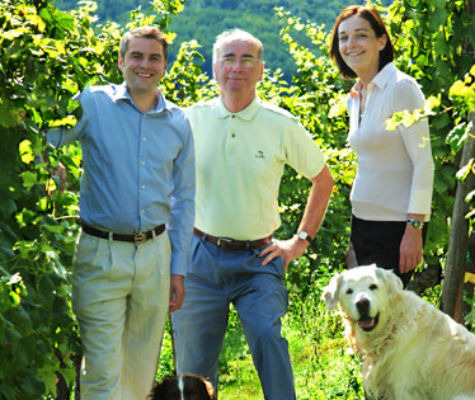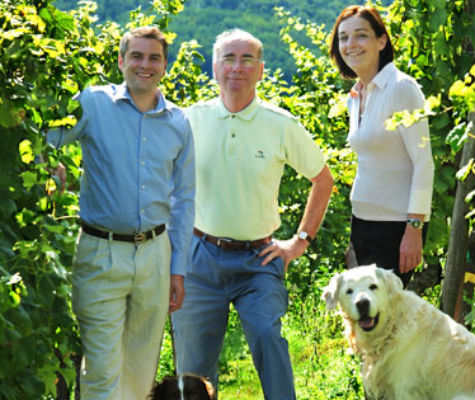Alsace In A Bottle: The Wines Of Domaines Schlumberger
"In Alsace, we are proud to be French." So says Thomas Schlumberger, export manager of Domaines Schlumberger, over dinner recently. But looking at one of his family's wine labels, one might not expect a French wine. After all, until I met Thomas I was butchering the Alsatian estate's name with my version of a Germanic pronunciation ("shluhm-burger") — far from the more lilting and correct pronunciation of "shloom-behr-jay." Luckily, I avoided embarrassment in person.
For Alsace, a region that has been a buffer between Germany and France throughout history, the dual influence is understandable. But it is also this historical influence that makes Domaines Schlumberger what it is today. A family-owned estate for seven generations, the winery was devastated after World War 1, as were many others in Alsace. While others decided to sell off difficult-to-replant vineyards on steep slopes, Ernest Schlumberger took the opportunity to purchase hillside property, resulting in over half of the estate's vineyards being classified as Grand Cru today.
Since then, Domaines Schlumberger has remained a winery dedicated to the land, standing by traditional, terroir-expressive methods. Vines of Riesling, Pinot gris, Gewurztraminer, and other classic Alsatian grapes grow horizontally on steep slopes using terraces, the walls of which are hand-crafted from sandstone from the nearby Vosges Mountains. Horses plow the vineyards, all three of whom live at the estate, along with their retired comrade who no longer plows — but as Thomas puts it, "They are family."
This close, almost familial connection to the vineyards shines through in the estate's wines; overall, they display incredible minerality, mouthwatering acidity, and fruit that bursts forth on the palate. As the Schlumbergers knew nearly a century ago, the effort required to tend the most difficult sites results in the most expressive, mineral-driven wines. Their top Grand Cru, Kitterle, is affectionately known as "calf-breaker" — its terraced vines are planted at slopes of nearly 50 degrees. But these vines produce one of the most flavorful, mouth-filling dry Rieslings I've ever had — think zesty lemon spritz, oyster shells, and dust-covered rocks.
So while Alsace may be proud to be a part of France, perhaps it's good that Domaines Schlumberger labels don't appear blatantly French. These wines don't taste of France — that would be far too broad a description. They taste of the sandstone and limestone in the soil; of the precariously steep slopes overlooking the countryside; of the hand-picked grapes; of the generations of commitment to the vine. Put simply, they taste of Domaines Schlumberger.
Three Wines from Domaines Schlumberger to try:
2011 Pinot Gris "Les Princes Abbés," Alsace ($17.99): Named after the monks who first tended to the Schlumberger vineyards long before the family arrived in the region, this entry-level Pinot gris is wildly aromatic: ripe peach and pear, honey, lemon, flint, herbs, and so much more. Warning: it's quite addictive.
2009 Riesling "Les Princes Abbés," Alsace ($16.99): This Riesling hits the spot on so many levels! It's both tart and round, high-toned and straightforward. Lots of peach blossom, purple flowers, salty rocks, and a crazy vanilla custard thing on the finish, which lasts for ages. Delicious.
2008 Riesling "Saering," Alsace Grand Cru ($27.99): This Grand Cru site has a high concentration of limestone, and it comes through in the wine — the flavors are intense, with tart lemon, tangerine, and a salty peach finish. Though it's dry, it smells sweet, like honey and orange blossoms mixed with that ever-present flint quality. Sip slowly and savor.

